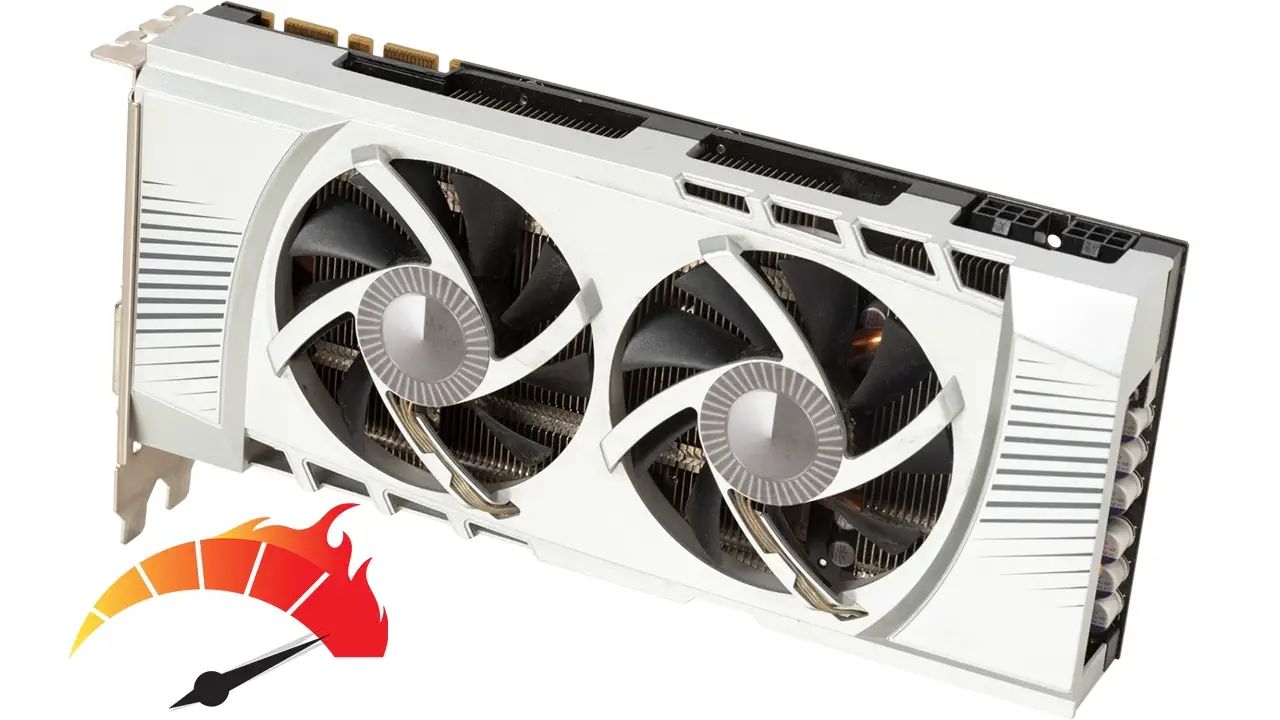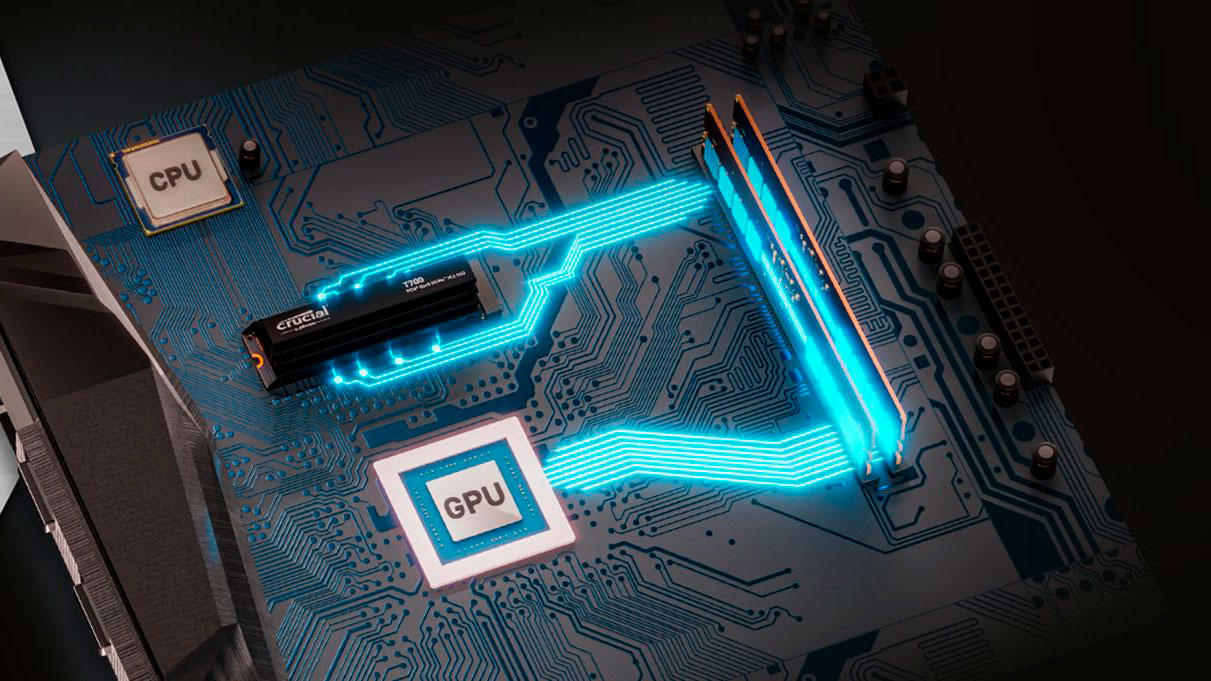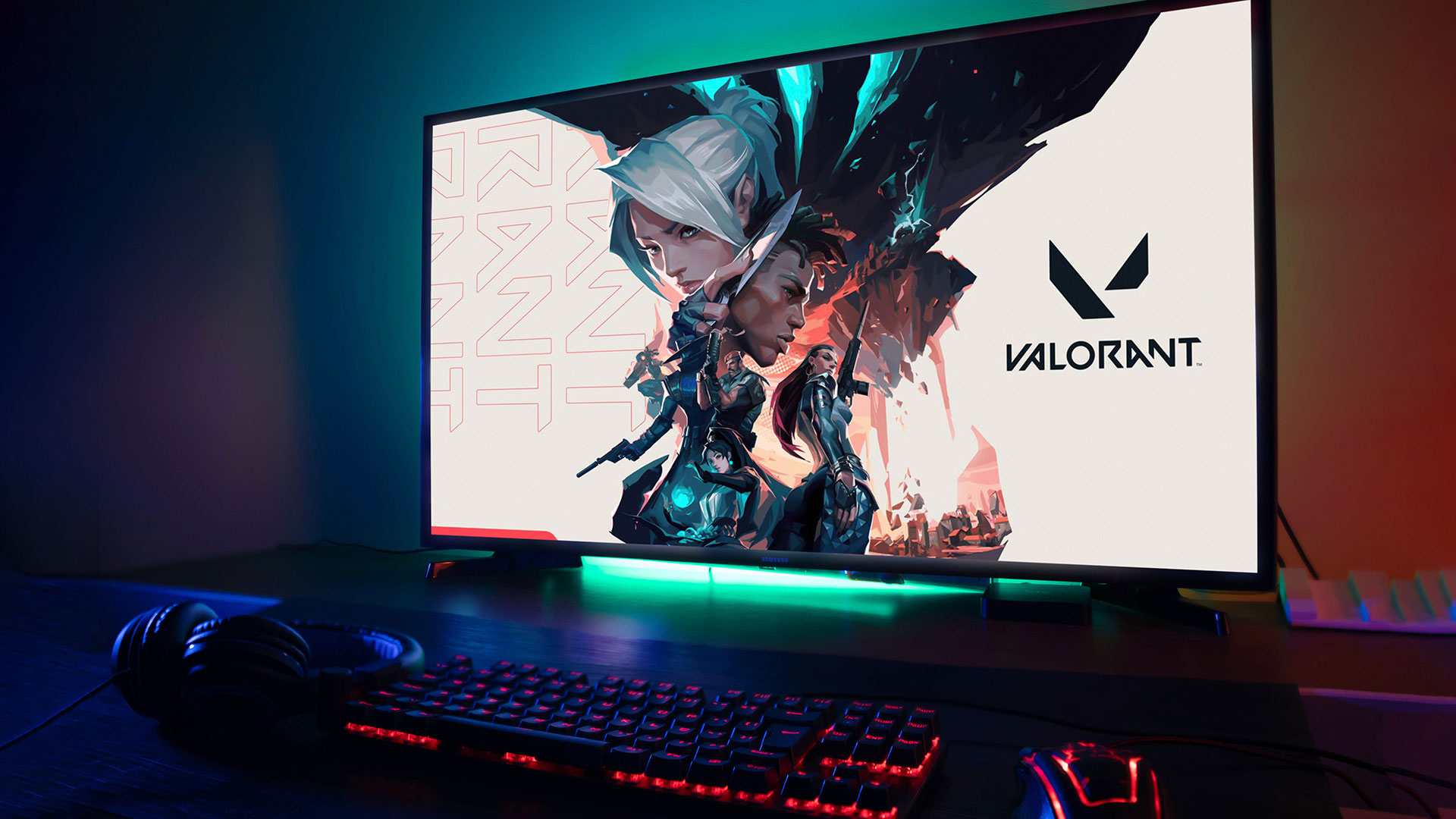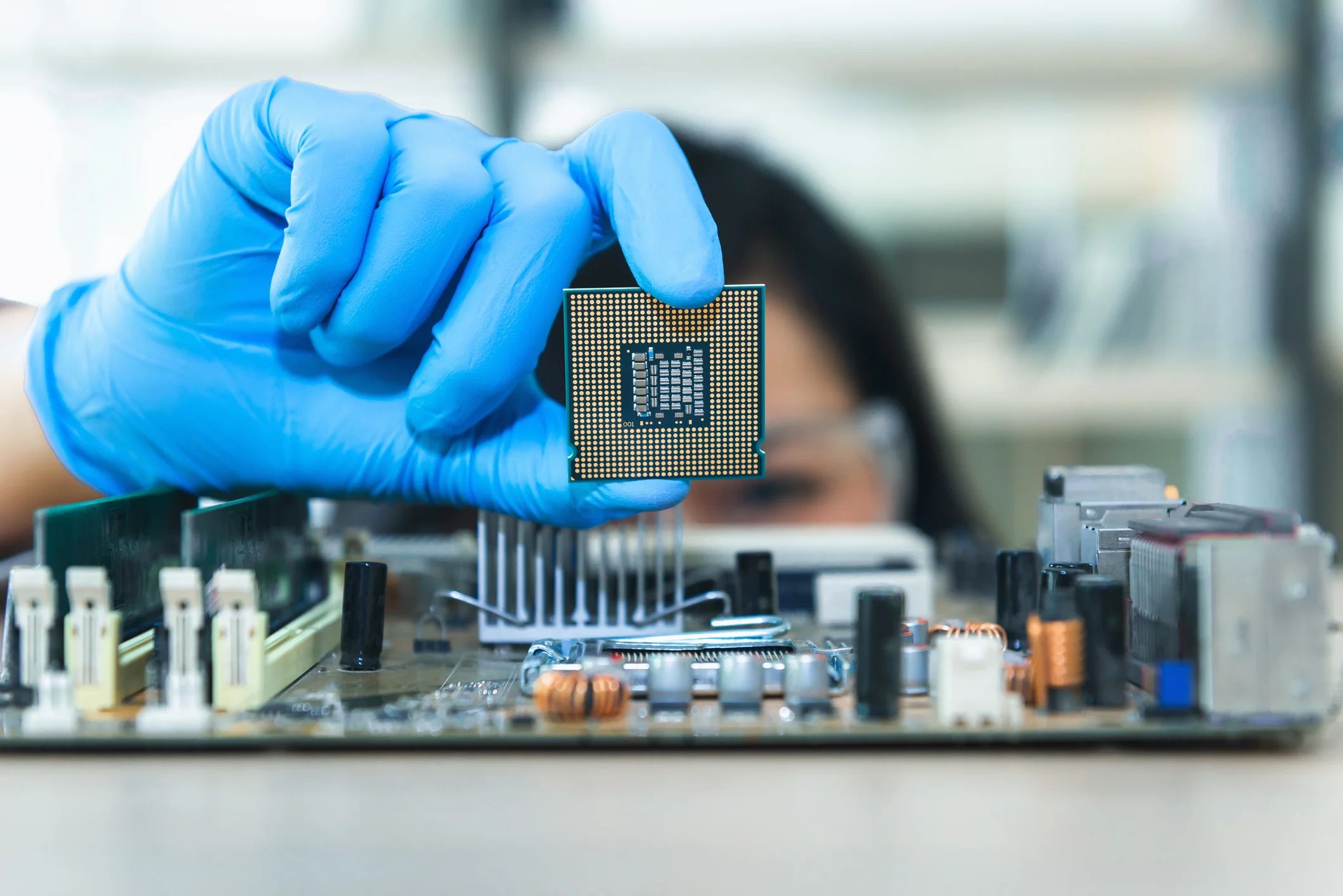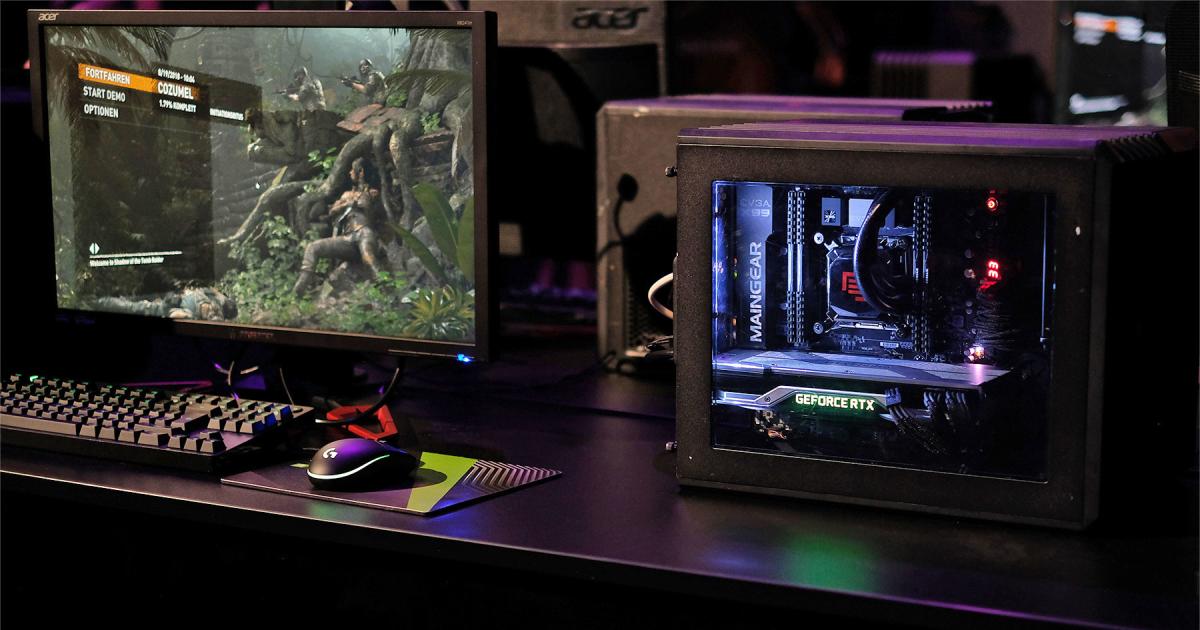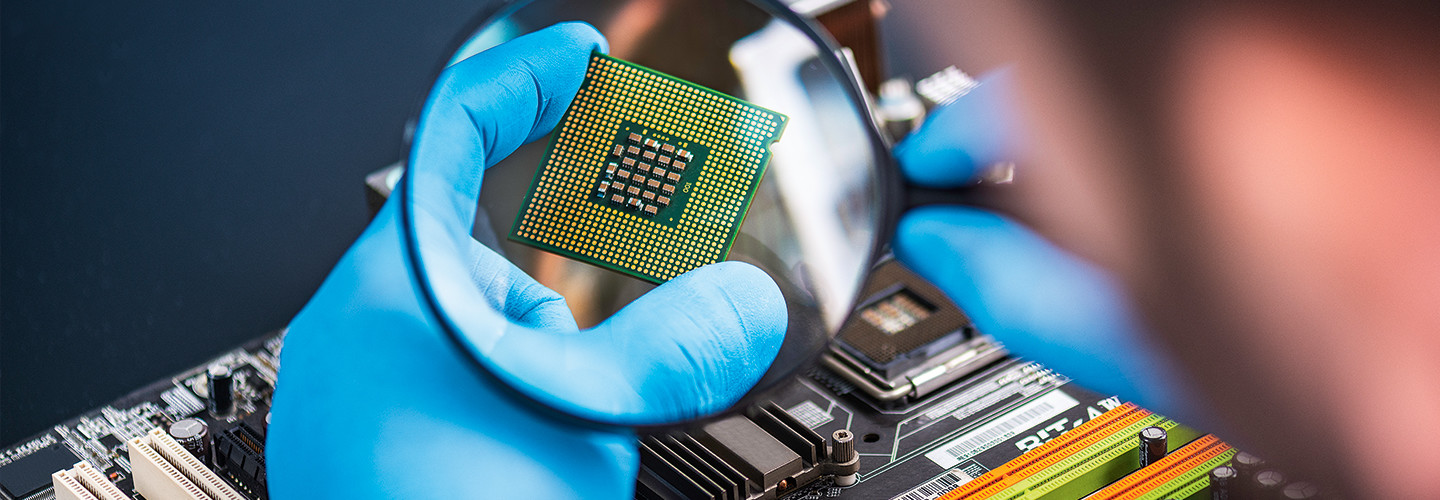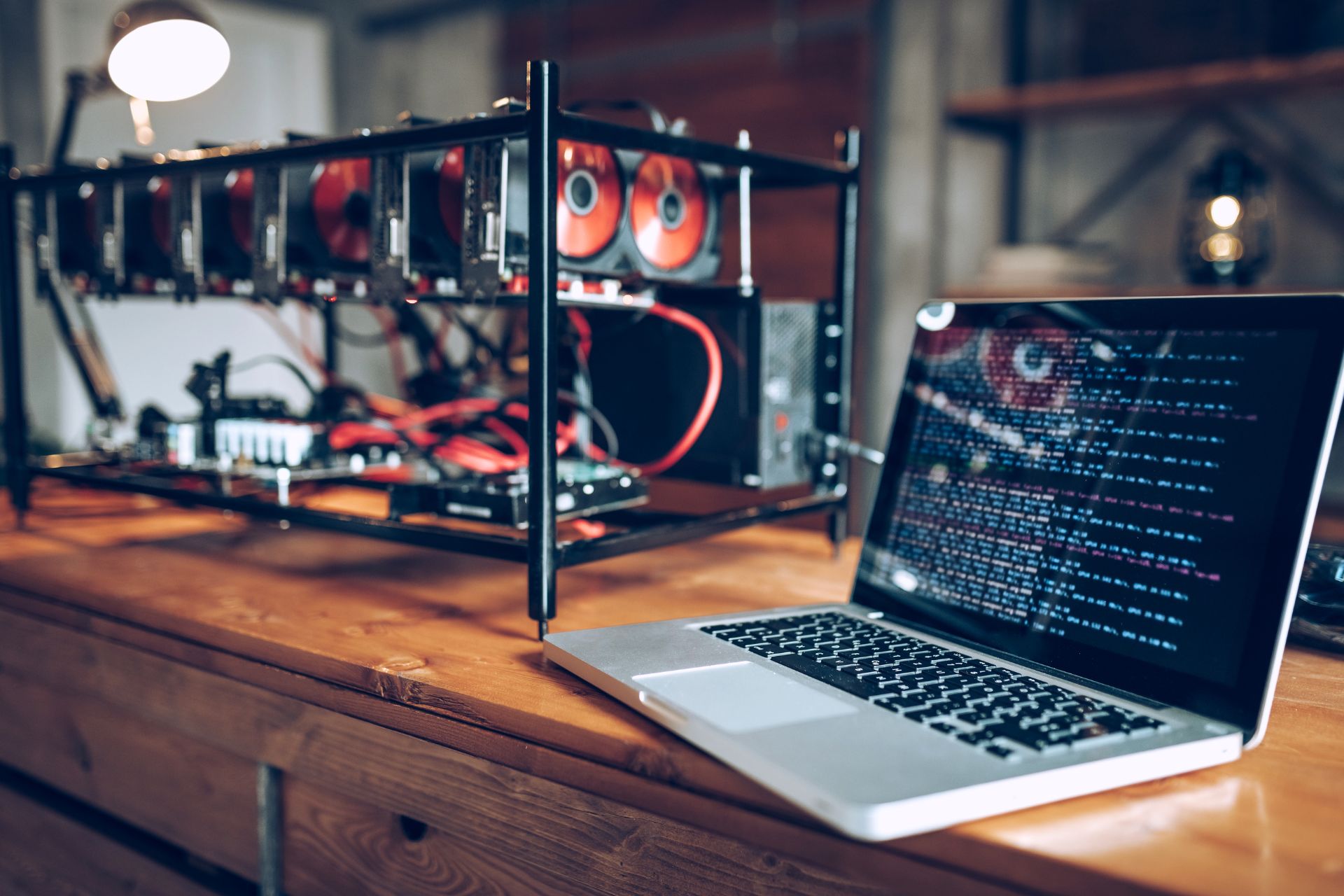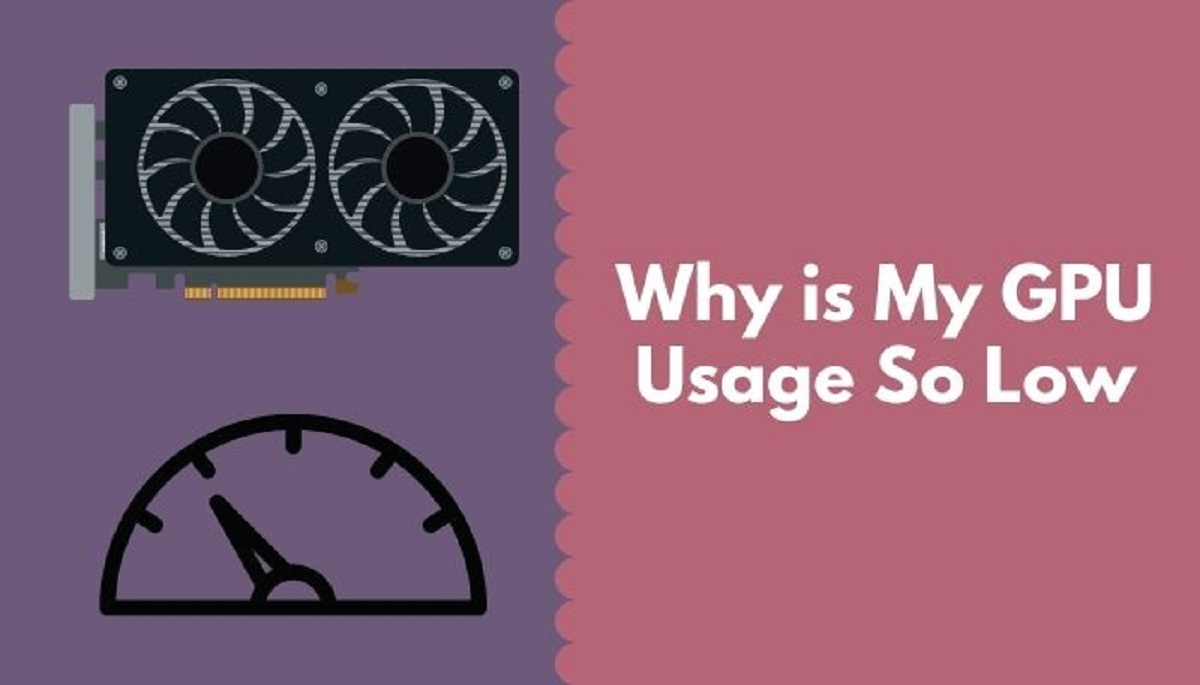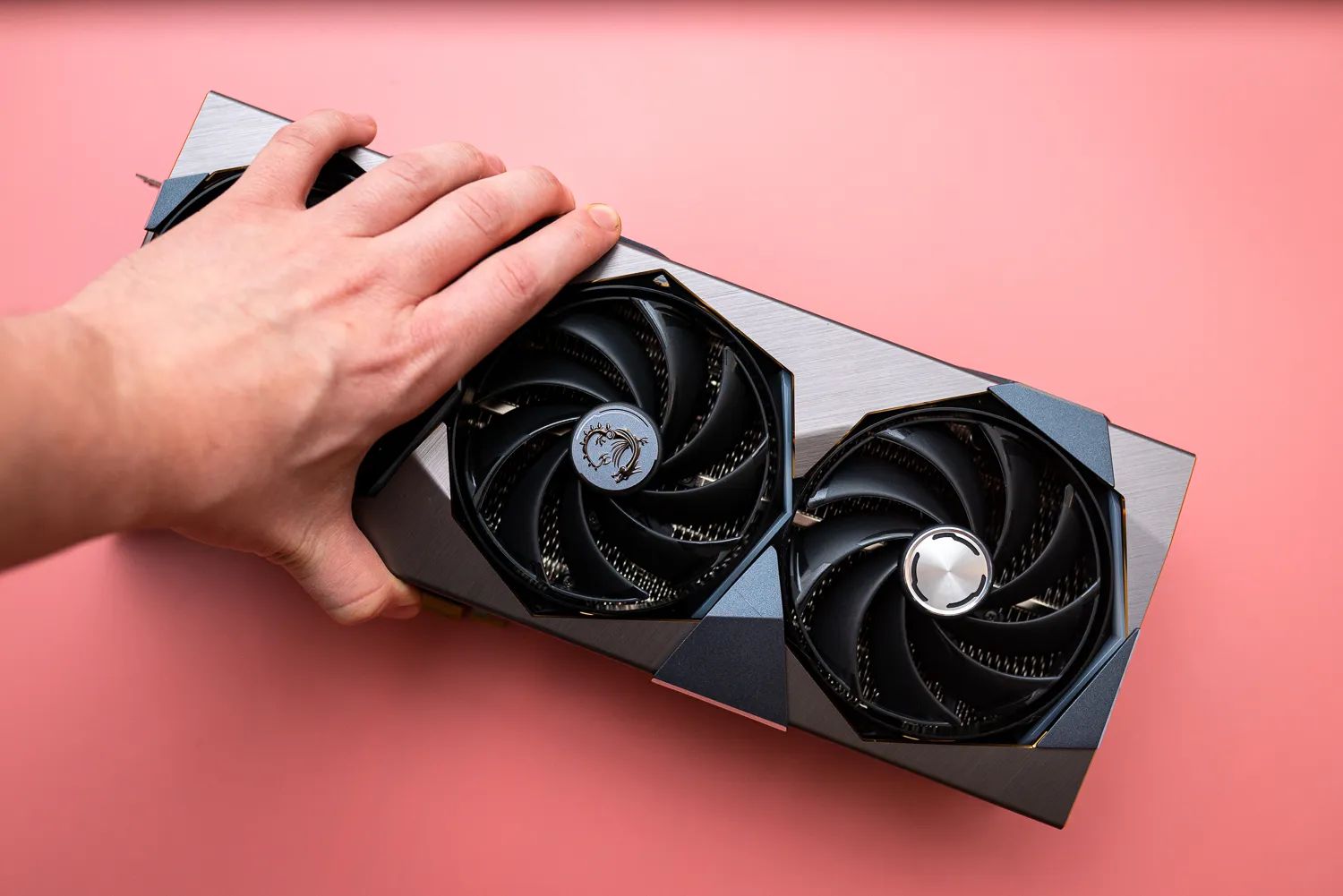Introduction
When you think of powerful computing, your mind might immediately go to the CPU (central processing unit). But there’s another crucial component that plays a significant role in processing complex graphics and accelerating tasks – the GPU (graphics processing unit). The GPU is the unsung hero behind the immersive gaming experiences, realistic visual effects in movies, and efficient data processing in various industries.
The GPU, often referred to as the “graphics card,” is a specialized electronic circuit that focuses on processing and rendering images, videos, and animations. Unlike the CPU, which handles general-purpose tasks, the GPU is specifically designed to handle hundreds or even thousands of parallel tasks simultaneously, making it highly efficient for graphics-intensive workloads.
Understanding GPU usage is essential not only for gamers and graphic designers but also for professionals in fields such as data analysis, artificial intelligence, and scientific research. By monitoring and optimizing GPU usage, you can ensure optimal performance, prevent bottlenecks, and make the most out of your hardware investment.
In this article, we’ll delve into the world of GPU usage, exploring its importance, how it is measured, factors that affect it, tips to optimize it, and common mistakes to avoid. Whether you’re a gaming enthusiast or a professional seeking to maximize GPU performance, this guide will provide valuable insights to help you harness the power of your GPU.
What is a GPU?
A GPU, or graphics processing unit, is a specialized electronic circuit that is designed to handle the complex calculations and computations required for rendering images, videos, and animations. While the CPU (central processing unit) is responsible for general-purpose tasks, the GPU is specifically optimized for parallel processing and performing tasks related to graphics and visual rendering.
The GPU acts as the powerhouse behind visually demanding applications, such as video games, virtual reality experiences, and graphic design software. It processes and generates images by performing millions of calculations simultaneously, making it incredibly efficient for tasks that require heavy graphical calculations. This ability to handle massive parallel processing is the reason why GPUs have become essential components in modern computing systems.
One of the key features of a GPU is its ability to accelerate the rendering of 3D graphics. By offloading complex calculations and rendering tasks from the CPU to the GPU, it allows for faster and more realistic graphics in games and other multimedia applications. The GPU’s architecture consists of numerous cores, each capable of performing multiple calculations simultaneously. This parallel processing capability enables the GPU to handle complex graphical workloads effectively.
Over the years, GPUs have evolved to become more than just graphics-rendering devices. Their parallel processing power has made them valuable tools for various fields of computation. GPUs are extensively used in fields such as scientific research, artificial intelligence, cryptocurrency mining, and data analysis. These applications heavily rely on the GPU’s ability to perform matrix operations, complex simulations, and deep learning algorithms in parallel, significantly speeding up the processing time.
It’s important to note that GPUs come in different form factors, including standalone graphics cards that can be installed in desktop computers and integrated GPUs found in laptops, smartphones, and other devices. The performance of a GPU can vary depending on factors such as the number of cores, clock speed, and memory bandwidth.
Overall, GPUs play a pivotal role in modern computing, enabling the creation of visually stunning graphics, accelerating complex calculations, and driving innovation in various industries. Without the power of GPUs, we wouldn’t be able to experience the immersive virtual worlds, stunning visual effects, and efficient data processing that we enjoy today.
What is GPU Usage?
GPU usage refers to the extent to which the GPU is utilized during a specific task or operation. It indicates how much of the GPU’s processing power is being utilized at any given time. GPU usage is typically measured as a percentage, with 100% indicating that the GPU is being fully utilized and 0% indicating that it is idle or not being used at all.
GPU usage is an important metric to monitor because it provides insights into the efficiency and performance of the GPU. By tracking GPU usage, you can determine whether the GPU is being adequately utilized or if there are any bottlenecks that may be affecting the overall system performance.
For gamers, GPU usage is particularly crucial. Monitoring GPU usage during gameplay can help identify whether the GPU is being fully utilized, which can determine the smoothness and frame rates of the game. If the GPU usage is consistently low, it may indicate that the game is not graphics-intensive or that there are potential issues with the system configuration or optimization.
In addition to gaming, GPU usage is also essential for professionals in industries such as video editing, 3D modeling, and data analysis. These tasks often require heavy graphical processing, and monitoring GPU usage can help ensure that the GPU is efficiently handling the workload without throttling or overheating.
Furthermore, GPU usage can be a valuable diagnostic tool when troubleshooting performance issues or identifying hardware limitations. If GPU usage is consistently maxed out at 100% during tasks that are not particularly demanding, it may indicate that the GPU is not powerful enough to handle the workload, or there may be software and driver issues that need to be addressed.
Ultimately, GPU usage provides insights into how effectively the GPU is being utilized and helps users optimize their systems for optimal performance. By monitoring and adjusting GPU usage, whether by adjusting graphics settings, optimizing software configurations, or upgrading to a more powerful GPU, users can maximize the graphics capabilities of their systems and enhance their overall computing experiences.
Why is GPU Usage Important?
GPU usage is an important metric that provides valuable insights into the performance and efficiency of the GPU. Understanding the importance of GPU usage can help users optimize their systems, make informed decisions when upgrading hardware, and ensure smooth and efficient operations in various applications and tasks.
One of the primary reasons why GPU usage is important is its direct impact on graphics-intensive applications, such as gaming and multimedia editing. GPUs are specifically designed to handle complex graphical calculations and rendering tasks, and monitoring GPU usage allows users to ensure that the GPU is being fully utilized to deliver the best possible graphics performance. Low GPU usage during gaming, for example, could indicate that the system is not optimized or that there are potential hardware or software conflicts affecting the performance.
Furthermore, GPU usage is crucial in fields that heavily rely on computational power, such as data analysis, scientific research, and artificial intelligence. These tasks often involve processing large amounts of data and performing complex calculations, and optimizing GPU usage ensures that the workload is distributed efficiently. By monitoring GPU usage, professionals can identify potential bottlenecks or limitations and make informed decisions regarding hardware optimization or upgrading.
Another reason why GPU usage is important is its role in system stability and heat management. GPUs can generate substantial amounts of heat when under heavy load. Monitoring GPU usage helps users ensure that the GPU temperature remains within safe limits, preventing overheating and potential damage to the hardware. Additionally, excessive GPU usage can result in system instability, leading to crashes or performance issues. By keeping an eye on GPU usage, users can identify any abnormalities and take necessary steps to optimize system stability.
Optimizing GPU usage also has implications for energy efficiency and power consumption. GPUs are power-hungry components, and inefficient usage can lead to higher energy usage and increased electricity costs. By monitoring and optimizing GPU usage, users can reduce power consumption, lower operating costs, and contribute to a greener and more sustainable computing environment.
In summary, GPU usage is important for several reasons. It directly impacts graphics performance, affects computational tasks in various fields, ensures system stability and heat management, and influences energy efficiency. By understanding and monitoring GPU usage, users can optimize their systems, maximize performance, and make informed decisions when it comes to hardware upgrades or system configurations.
How is GPU Usage Measured?
Measuring GPU usage is essential for understanding how effectively the GPU is being utilized during specific tasks or operations. GPU usage is typically measured as a percentage, indicating the proportion of the GPU’s processing power that is currently being utilized.
There are several methods and tools available to measure GPU usage, depending on the operating system and the specific software being used. Here are a few commonly used approaches:
- Task Manager/Activity Monitor: On Windows, the Task Manager provides a basic overview of GPU usage. Simply open Task Manager, navigate to the Performance tab, and select GPU. The Activity Monitor on macOS provides similar information. These built-in tools display the overall GPU usage for the system and may also show details about the individual processes that are utilizing the GPU.
- GPU Monitoring Software: Third-party software applications dedicated to monitoring system performance often include GPU monitoring features. Examples include MSI Afterburner, GPU-Z, and HWMonitor. These tools provide more detailed information about GPU usage, such as temperature, clock speed, memory usage, and fan speed.
- Developer Tools: Developers and professionals working with graphics-intensive applications often rely on specialized development tools to measure GPU usage. NVIDIA provides the NVIDIA System Management Interface (nvidia-smi) command-line utility, which can be used to monitor GPU usage in real-time. AMD offers a similar tool called Radeon Software, which provides GPU information and performance metrics.
- Benchmarking and Profiling Tools: Benchmarking tools, such as 3DMark and Unigine Heaven, can provide GPU usage information during specific tests or benchmarks. These tools are particularly useful for assessing the performance of the GPU under different workloads. Additionally, profiling tools like Nvidia Nsight and AMD GPU PerfStudio allow developers to analyze GPU usage and performance for application optimization.
It’s important to note that GPU usage values can fluctuate depending on the specific task or application running at any given time. For instance, GPU usage during an intense gaming session will likely be higher compared to when the system is idle or running simple tasks. Similarly, GPU usage will vary depending on the complexity of the graphics being rendered or the workload being processed.
When measuring GPU usage, it’s also crucial to consider factors such as CPU usage, memory usage, and system temperatures. Monitoring these metrics in combination with GPU usage can provide a more comprehensive understanding of overall system performance.
In summary, GPU usage can be measured using built-in system tools, third-party software applications, developer tools, or benchmarking and profiling tools. By monitoring GPU usage, users can gain insights into how effectively the GPU is being utilized and make informed decisions to optimize performance and troubleshoot any issues that may arise.
Factors That Affect GPU Usage
GPU usage can vary depending on a variety of factors. Understanding these factors is crucial for optimizing GPU performance, identifying potential bottlenecks, and ensuring that the GPU is utilized to its maximum potential. Here are some key factors that can affect GPU usage:
- Task Complexity: The complexity of the task or application being run is one of the primary factors that influence GPU usage. Graphics-intensive tasks such as gaming, video editing, or rendering 3D animations will typically require higher GPU usage compared to simple tasks like web browsing or word processing.
- Graphics Settings: The graphics settings within an application or game can significantly impact GPU usage. Higher settings, such as high-resolution textures, advanced lighting effects, and anti-aliasing, will require more GPU power and result in increased GPU usage. Adjusting these settings can help balance performance and visual quality based on the capabilities of your GPU.
- Software Optimization: The optimization and efficiency of the software being used can affect GPU usage. Well-optimized software will effectively utilize the available GPU resources and minimize any unnecessary workload. On the other hand, poorly optimized software may result in increased GPU usage without providing a substantial improvement in performance.
- Hardware Specifications: The specifications of the GPU itself, including the number of cores, clock speed, memory bandwidth, and VRAM capacity, can impact GPU usage. A more powerful GPU will generally exhibit higher GPU usage, as it can handle more complex tasks and process larger amounts of data simultaneously.
- System Configuration: The overall configuration and performance of the system can influence GPU usage. Factors such as the CPU performance, available system memory, and storage speed can impact the overall efficiency of the system, which, in turn, affects GPU usage. A well-balanced system with sufficient resources can ensure optimal GPU performance.
- Background Processes: The presence of other processes running concurrently on the system can potentially impact GPU usage. Background processes utilizing the GPU, such as screen recording software or cryptocurrency mining, can increase GPU usage and affect the available resources for other tasks. Monitoring and managing these processes can help optimize GPU usage.
It’s worth noting that the impact of these factors on GPU usage can vary depending on the specific hardware and software configurations. Different GPUs have varying strengths and weaknesses, and certain applications may be more optimized for specific hardware architectures.
By considering these factors, users can optimize GPU usage by adjusting graphics settings, optimizing software, upgrading hardware where necessary, and ensuring a well-configured system overall. A balanced approach will help maximize GPU performance and ensure a smooth experience in graphics-intensive applications, gaming, and other tasks that rely heavily on GPU power.
Tips to Optimize GPU Usage
Optimizing GPU usage can help improve performance, maximize efficiency, and ensure a smoother computing experience. Here are some tips to help you optimize GPU usage:
- Adjust Graphics Settings: One of the most effective ways to optimize GPU usage is to adjust graphics settings in applications and games. Lowering settings such as resolution, texture quality, and shadow effects can significantly reduce GPU usage while still providing a visually appealing experience. Experiment with different settings to find the balance between performance and visual quality that suits your needs.
- Update Graphics Drivers: Keeping your graphics drivers up to date is crucial for optimal GPU performance. Graphics driver updates often include bug fixes, performance improvements, and compatibility enhancements. Visit the official website of your GPU manufacturer (NVIDIA, AMD, Intel) to download the latest drivers for your specific GPU model.
- Monitor Background Processes: Be mindful of background processes that may use the GPU, such as screen recording software, cryptocurrency mining, or video encoding applications. Close unnecessary applications and processes to free up GPU resources and ensure that your GPU is dedicated to the task at hand.
- Optimize Software Settings: Some applications and games provide additional settings to optimize GPU usage. Look for options related to VSync (vertical synchronization), frame rate caps, or adaptive performance settings. Adjusting these settings can help reduce unnecessary GPU workload and improve overall performance.
- Manage Heat and Power: GPU performance can be affected by temperature and power constraints. Ensure good airflow within your computer case, clean any dust buildup on the GPU and fans, and consider using third-party software to manage GPU fan speeds. Additionally, you can adjust power settings in your GPU control panel to prioritize performance or power savings based on your needs.
- Upgrade Hardware: If your GPU is consistently maxed out and struggles to handle the tasks you require, it may be time to consider upgrading to a more powerful GPU. Research the recommended system requirements for the applications you use and select a GPU that can handle those demands effectively.
- Close Unnecessary Applications: Running multiple applications simultaneously can impact GPU usage. Close any unnecessary background applications to free up GPU resources and ensure that the GPU is primarily dedicated to the task you want to prioritize.
- Monitor and Benchmark: Use GPU monitoring and benchmarking tools to keep an eye on GPU usage, temperatures, and performance metrics. These tools can help you identify any performance bottlenecks and assist in optimizing GPU usage for specific tasks or applications.
Keep in mind that optimizing GPU usage involves finding the right balance between performance and visual quality based on your specific needs and hardware capabilities. Experiment with different settings and tools to discover what works best for you. By following these tips, you can optimize GPU usage, enhance performance, and make the most out of your GPU’s capabilities.
Common Mistakes With GPU Usage
While optimizing GPU usage is important, there are common mistakes that users often make that can impact performance and efficiency. Avoiding these mistakes can help ensure that you are maximizing the potential of your GPU. Here are some common mistakes to watch out for:
- Not Updating Graphics Drivers: Failing to update graphics drivers regularly is a common mistake. Outdated drivers can lead to compatibility issues, reduced performance, and stability problems. Make it a habit to regularly check for and install the latest drivers for your GPU.
- Overlooking Application and Game Settings: Many applications and games come with default settings that may not be optimal for your system. Ignoring the graphics settings and not customizing them according to your hardware capabilities can result in lower performance or unnecessary strain on the GPU.
- Running Unnecessary Background Processes: Leaving resource-intensive background processes or applications running while using GPU-intensive tasks can impact GPU performance. Close unnecessary applications, especially ones that utilize the GPU, to free up resources and ensure maximum GPU utilization.
- Ignoring System Cooling: Overheating can lead to GPU throttling, reduced performance, and even hardware damage. Neglecting proper system cooling, such as not maintaining good airflow, failing to clean the GPU and fans, or not monitoring system temperatures, can hinder GPU performance and lifespan.
- Having Incompatible Hardware: Using hardware that is not compatible with the GPU can limit its actual performance. This includes having an older or underpowered CPU, insufficient system memory, or an outdated power supply. Ensuring that your hardware components are compatible and well-matched with your GPU is essential for optimal performance.
- Not Monitoring GPU Usage: Failing to monitor GPU usage can result in missed opportunities for optimization and troubleshooting. Monitoring GPU usage provides valuable insights into performance bottlenecks, identifies underutilization, and helps determine the appropriate optimizations needed for better GPU performance.
- Maximizing Graphics Settings Beyond Hardware Capabilities: Pushing graphics settings to their maximum, even when your hardware cannot handle it, can lead to poor performance and stuttering in games or applications. Be realistic with your expectations and adjust graphics settings according to your hardware’s capabilities for a smoother experience.
- Overlooking GPU Power Management: Incorrectly configuring power settings for the GPU, such as setting it to power-saving mode, can limit performance potential. Ensure that your GPU power management settings prioritize performance or adjust power limits based on your needs.
By avoiding these common mistakes, you can optimize GPU usage, improve performance, and enhance the lifespan of your GPU. Remember to regularly update drivers, customize settings, manage background processes, maintain proper cooling, ensure compatible hardware, monitor GPU usage, adjust graphics settings as needed, and optimize power management for the best GPU experience.
Conclusion
Understanding GPU usage and optimizing its performance is crucial for maximizing the capabilities of your graphics processing unit. Whether you’re a gamer, a graphic designer, a data analyst, or a researcher, GPU usage plays a significant role in delivering smooth and efficient computing experiences.
In this article, we have explored the fundamentals of GPU usage and its importance in various applications. We learned that the GPU is a specialized electronic circuit designed to handle complex graphics rendering and parallel processing tasks. By monitoring GPU usage, we can assess how effectively the GPU is being utilized and make informed decisions to optimize performance.
We discussed factors that influence GPU usage, such as task complexity, graphics settings, software optimization, hardware specifications, system configuration, and background processes. Understanding these factors helps us identify potential bottlenecks and optimize GPU usage for better performance and efficiency.
Furthermore, we provided a set of tips to optimize GPU usage, including adjusting graphics settings, updating drivers, monitoring background processes, optimizing software settings, managing heat and power, considering hardware upgrades, and monitoring system performance. By following these tips, you can ensure that your GPU is performing at its best in various tasks and applications.
Lastly, we highlighted common mistakes that users often make with GPU usage, such as neglecting driver updates, overlooking application settings, running unnecessary background processes, ignoring system cooling, using incompatible hardware, not monitoring GPU usage, maximizing graphics settings beyond hardware capabilities, and overlooking GPU power management. Avoiding these mistakes will help you avoid performance issues and get the most out of your GPU.
In conclusion, understanding, monitoring, and optimizing GPU usage is essential for achieving optimal performance and efficiency in graphics-intensive tasks. By implementing the tips and avoiding common mistakes discussed in this article, you can ensure that your GPU is utilized to its full potential, resulting in outstanding visual experiences, improved productivity, and enhanced computing performance.







